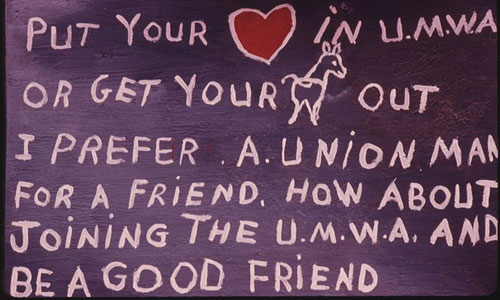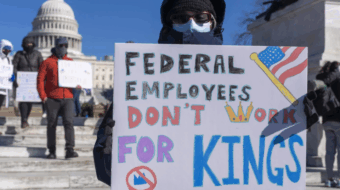
Contrary to what right-wing politicians would have us believe, labor unions have been part of the fabric of American society for a very long time. Case in point: On Jan. 22, 124 years ago, the United Mine Workers of America was founded 124 years ago, on Jan. 22, 1890, in Columbus, Ohio.
The new union, that would play a legendary role in the battle for workers’ rights and for health and safety on the job, was formed with the merger of the old Knights of Labor Trade Assembly No. 135 and the National Progressive Miners Union.
One of the mineworkers’ early historic struggles was made famous with John Sayles’ movie “Matewan.” It depicts the circumstances around the May 19, 1920, killing of 12 people during a gunfight between townspeople and Baldwin-Felts Detective Agency gunmen, hired by mine owners to block workers’ efforts to organize a union in Matewan, W.Va. The struggle in the area has become known as the Battle of Blair Mountain.
More recent famous struggles included the 1973 Brookside strike in Harlan County, Ky., and the 1989-1990 Pittston strike in Virginia and West Virginia. The Brookside strike was immortalized in the documentary film “Harlan County, USA.”
The UMW was established in order to develop mine safety; to improve mine workers’ independence from the mine owners and the notorious company store; and to provide miners with collective bargaining power. As the union notes on its website, “The constitution adopted by the delegates to the first UMWA convention barred discrimination based on race, religion or national origin. The UMWA founding fathers clearly recognized the destructive power of discrimination at a time when racism and ethnic discrimination were accepted facts in some parts of American culture.”
Further, “The delegates also called for miners to obtain a fair share of the wealth they created ‘fully compatible with the dangers of our calling.'”
In the 1930s, as part of the nationwide industrial union organizing sweeping the country, led in many places by communists, UMWA organizers spread throughout the United States to organize all coal miners into labor unions. Under the leadership of the larger than life John L. Lewis, the UMW joined the CIO, which organized workers in the major industries of our country including the auto, steel, electrical and rubber industries, giving masses of American workers a voice at work for the first time. The UMW grew to 800,000 members and played a big role in the progressive New Deal coalition.
In the 1960s the UMW led a successful fight for passage of the landmark 1969 federal Coal Mine Health and Safety Act, which took steps to prevent black lung disease, a deadly illness ravaging coal miners, and compensated victims. It was the time that Congress mandated the elimination of a human-made occupational disease. But the battle to eliminate black lung still continues.
Today’s AFL-CIO president, Richard Trumka, comes out of the UMWA. Trumka comes from a mineworker family in Western Pennsylvania and is a former mineworker himself. He was elected UMW president in 1995, serving until 1995, when he became AFL-CIO secretary-treasurer.
Photo: Closeup of a picket sign made by miners on strike against Eastover Mining’s Brookside Mine, owned by Duke Power Co., in Harlan County, Ky., June 1974. The miners had voted for a union, but Eastover refused to sign, and the workers went out on strike, with Duke Energy bringing in “scab” replacement workers to try to break the strike. U.S. National Archives








